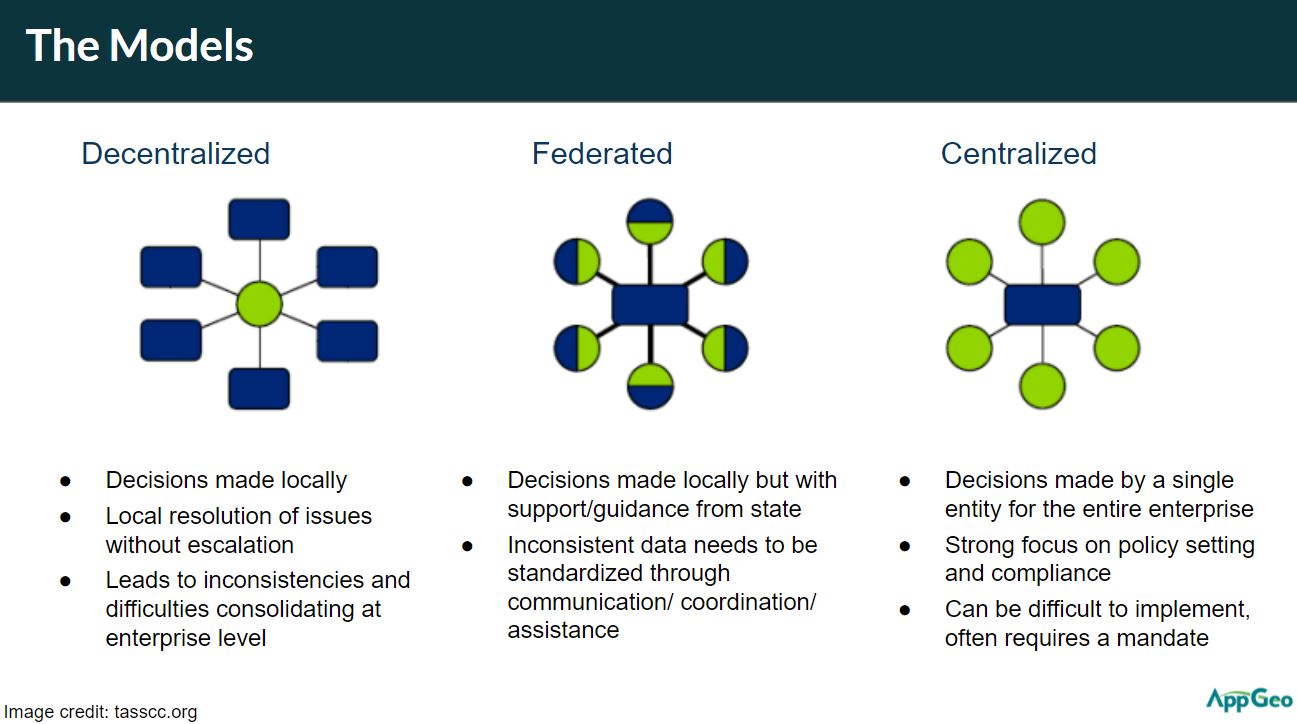
By Faiz Haider, Senior BI Consultant
Federated Data Governance: A Balanced Approach
In today’s data-driven world, effective Data Governance is crucial for maintaining data quality, compliance, and security. Traditional models – centralised and decentralised – each have their pros and cons. However, Federated Data Governance offers a compelling middle ground, addressing the limitations of both approaches.
Faiz Haider looks at how Federated Data Governance can bridge the gap and offer a flexible, yet consistent solution.
Centralised vs. Decentralised Data Governance
Centralised Data Governance involves a central Data Governance Committee making enterprise-wide data decisions, such as developing and enforcing policies and standards, maintaining data quality, and ensuring compliance with regulations. This approach ensures consistency, which can enhance data trust and compliance. However, it may create a disconnect between central governance and individual business units, potentially stifling innovation and flexibility.
Decentralised Data Governance allows individual teams to manage their Data Governance, which can be tailored to specific needs and foster a sense of ownership. This means teams can adjust policies based on business requirements. However, this approach can lead to isolated data siloes, inconsistent policies, and challenges in achieving data interoperability.
The Federated Data Governance Model
Federated Data Governance combines the best aspects of centralised and decentralised models. It allows organisations to implement Data Governance in a way that balances central oversight with local autonomy. Here’s how it works:
1.Establishing a Central Governance Framework and Committee: This committee develops overarching policies and standards, ensures alignment with strategic objectives, and focuses on higher-level governance aspects such as data quality and compliance.
2.Creating Business Unit Data Governance: Each business unit tailors data governance practices to its needs while ensuring adherence to central policies. Within the business unit, those responsible for Data Governance handle it day-to-day and address specific business unit Data Governance requirements, and ensure their data is accurate, accessible, and compliant.
3.Fostering Collaboration and Communication: Set up regular communication channels between the central team and those responsible for business unit Data Governance. Monthly meetings, shared documentation, and collaborative platforms such as Microsoft Teams help ensure consistency and address issues effectively.
4.Implementing Technology and Tools: Invest in Data Governance tools that support both central oversight and business unit autonomy. This could include metadata management systems, data quality monitoring tools, and compliance tracking software.
5.Monitoring and Continuous Improvement: Establish metrics and KPIs to track the effectiveness of the Data Governance model. Use feedback to refine processes and adapt to evolving requirements.
6.Training and Awareness: Regular training for Data Stewards and stakeholders is essential. Awareness campaigns across the business should highlight the importance of Data Governance and promote compliance.
| Centralised | Decentralised | Federated |
Decision-Making | Decision made by a single entity for the entire enterprise. | Decisions are made locally. | Decisions are made locally but with support and guidance from the central Data Governance team. |
Focus Areas | Strong focus on policy setting and compliance. | Closely aligned to business priorities. | Inconsistent data needs to be standardised through communication, coordination, and assistance. |
Challenges | Can be difficult to implement and often requires mandate. | Leads to inconsistencies and difficulties consolidating at enterprise level. | Can be complex to manage so requires effective collaboration and communication across business units. |
Example In Action
Consider a hypothetical multinational corporation, ABC Limited, based in New Zealand, but with operations worldwide. Each region faces unique regulatory requirements (e.g., NZ Privacy Act 2020, Australian Privacy Act 1988, and GDPR in Europe), and each has unique business processes. A centralised model might struggle to address these diverse needs, while a decentralised model could lead to data siloes and inconsistent practices.
A federated approach allows ABC Limited to develop a central Data Governance Framework that sets broad policies while enabling the business to adapt these policies to local needs. This balance ensures consistency and compliance while supporting flexibility and innovation.
The Final Word
As New Zealand organisations navigate the complexities of Data Governance, federated governance offers a balanced solution. By adopting this approach, organisations can enhance their Data Governance, drive agility, and ensure alignment with overall business goals.
At Stellar, we love to keep our team up to date with the latest in thought leadership, so they can pass on valuable learnings to our clients.
To get started with your Data or AI advisory journey, contact Stellar Advisory on 0800 228 872, or email us on bi@stellarconsulting.co.nz.




